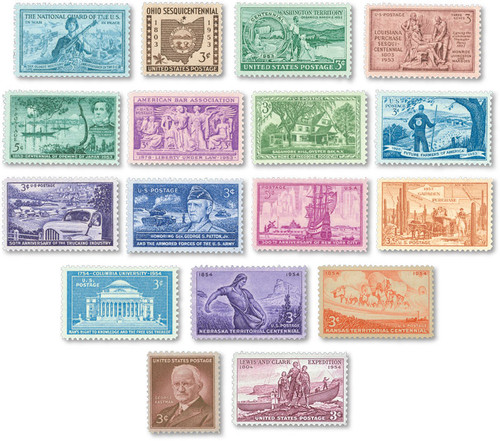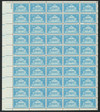
1954 3¢ Columbia University
# 1029 - 1954 3¢ Columbia University
$0.35 - $20.00
U.S. #1029
3¢ Columbia University
3¢ Columbia University
Issue Date: January 4, 1954
City: New York, NY
Quantity: 118,540,000
Printed by: Bureau of Engraving and Printing
Printing Method: Rotary Press
Perforations: 11 x 10½
Color: Blue
City: New York, NY
Quantity: 118,540,000
Printed by: Bureau of Engraving and Printing
Printing Method: Rotary Press
Perforations: 11 x 10½
Color: Blue
U.S. #1029 commemorates the 200th anniversary of Columbia University. The stamp pictures the front view of the Low Memorial Library. The library, which serves as the schools administrative center, was built in 1895 by then-University President Seth Low in honor of his father, Abiel Abbot Low.
U.S. #1029
3¢ Columbia University
3¢ Columbia University
Issue Date: January 4, 1954
City: New York, NY
Quantity: 118,540,000
Printed by: Bureau of Engraving and Printing
Printing Method: Rotary Press
Perforations: 11 x 10½
Color: Blue
City: New York, NY
Quantity: 118,540,000
Printed by: Bureau of Engraving and Printing
Printing Method: Rotary Press
Perforations: 11 x 10½
Color: Blue
U.S. #1029 commemorates the 200th anniversary of Columbia University. The stamp pictures the front view of the Low Memorial Library. The library, which serves as the schools administrative center, was built in 1895 by then-University President Seth Low in honor of his father, Abiel Abbot Low.









